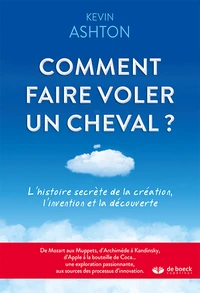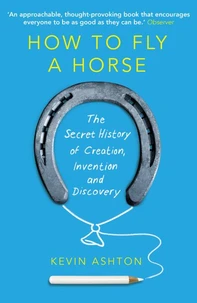The Story of Stories. The Million - Year History of a Uniquely Human Art
Par :Formats :
Actuellement indisponible
Cet article est actuellement indisponible, il ne peut pas être commandé sur notre site pour le moment. Nous vous invitons à vous inscrire à l'alerte disponibilité, vous recevrez un e-mail dès que cet ouvrage sera à nouveau disponible.
Disponible dans votre compte client Decitre ou Furet du Nord dès validation de votre commande. Le format ePub protégé est :
- Compatible avec une lecture sur My Vivlio (smartphone, tablette, ordinateur)
- Compatible avec une lecture sur liseuses Vivlio
- Pour les liseuses autres que Vivlio, vous devez utiliser le logiciel Adobe Digital Edition. Non compatible avec la lecture sur les liseuses Kindle, Remarkable et Sony
- Non compatible avec un achat hors France métropolitaine
 , qui est-ce ?
, qui est-ce ?Notre partenaire de plateforme de lecture numérique où vous retrouverez l'ensemble de vos ebooks gratuitement
Pour en savoir plus sur nos ebooks, consultez notre aide en ligne ici
- Nombre de pages384
- FormatePub
- ISBN978-0-06-343872-9
- EAN9780063438729
- Date de parution03/03/2026
- Protection num.Adobe DRM
- Infos supplémentairesepub
- ÉditeurHarper
Résumé
An irresistible and enchanting journey through human history-from mankind's earliest fires to the latest smart phones-that tells the surprising and untold story of storytelling. Joan Didion told us, "We tell ourselves stories in order to live." And yet, the story of stories has never been told until now. MIT technology pioneer Kevin Ashton was at the forefront of the digital revolution that led to the invention of the smartphone, the ultimate storytelling device.
This latest technology in the long arc of human storytelling allows anyone, for the first time in history, to tell stories to everyone. In The Story of Stories, Ashton tells the untold story of storytelling. The result is an eye-opening, compulsive journey through the eight great revolutions of storytelling, all of which follow a simple pattern: each major new storytelling tool increases the number of people who can share stories and the number of people with whom those stories can be shared.
Our first night-fires created the earliest audiences for spoken stories. Language did not lead us to stories; stories led us to language. In time, the development of rhyme, song, and other mnemonic devices allowed those spoken stories to be preserved for generations; pictures drawn on cave walls turned preservation into permanence, telling stories we still experience thousands of years later; writing enabled storytellers to spread tales to faraway places; the Chinese invented printing with moveable metal type around 700 CE; the Toltecs independently invented it at about the same time; 750 years later Gutenberg independently invented it again, adding a converted wine press to create the mass production of mass communication.
Over time, printing presses increased the number of storytellers and the size of their audiences by many orders of magnitude, a trend which led us to great revolutions, and electric, then electronic, then digital storytelling and all our storytelling tools of today-and tomorrow's. In this remarkable book, more than twenty-five years in the making, Ashton looks at the development of human storytelling to help us understand where we are in the latest iteration that is the digital era.
Drawing on examples from art, literature, music, and pop culture, from the Bible to Bon Jovi, Aristotle to Artificial Intelligence, Frederick Douglass to Facebook, and cave paintings to cinema, The Story of Stories is a passionate and crucial exploration of how stories and the tools we use to tell them continue to change us, cause revolutions, and connect us to each other and give our lives meaning.
This latest technology in the long arc of human storytelling allows anyone, for the first time in history, to tell stories to everyone. In The Story of Stories, Ashton tells the untold story of storytelling. The result is an eye-opening, compulsive journey through the eight great revolutions of storytelling, all of which follow a simple pattern: each major new storytelling tool increases the number of people who can share stories and the number of people with whom those stories can be shared.
Our first night-fires created the earliest audiences for spoken stories. Language did not lead us to stories; stories led us to language. In time, the development of rhyme, song, and other mnemonic devices allowed those spoken stories to be preserved for generations; pictures drawn on cave walls turned preservation into permanence, telling stories we still experience thousands of years later; writing enabled storytellers to spread tales to faraway places; the Chinese invented printing with moveable metal type around 700 CE; the Toltecs independently invented it at about the same time; 750 years later Gutenberg independently invented it again, adding a converted wine press to create the mass production of mass communication.
Over time, printing presses increased the number of storytellers and the size of their audiences by many orders of magnitude, a trend which led us to great revolutions, and electric, then electronic, then digital storytelling and all our storytelling tools of today-and tomorrow's. In this remarkable book, more than twenty-five years in the making, Ashton looks at the development of human storytelling to help us understand where we are in the latest iteration that is the digital era.
Drawing on examples from art, literature, music, and pop culture, from the Bible to Bon Jovi, Aristotle to Artificial Intelligence, Frederick Douglass to Facebook, and cave paintings to cinema, The Story of Stories is a passionate and crucial exploration of how stories and the tools we use to tell them continue to change us, cause revolutions, and connect us to each other and give our lives meaning.
An irresistible and enchanting journey through human history-from mankind's earliest fires to the latest smart phones-that tells the surprising and untold story of storytelling. Joan Didion told us, "We tell ourselves stories in order to live." And yet, the story of stories has never been told until now. MIT technology pioneer Kevin Ashton was at the forefront of the digital revolution that led to the invention of the smartphone, the ultimate storytelling device.
This latest technology in the long arc of human storytelling allows anyone, for the first time in history, to tell stories to everyone. In The Story of Stories, Ashton tells the untold story of storytelling. The result is an eye-opening, compulsive journey through the eight great revolutions of storytelling, all of which follow a simple pattern: each major new storytelling tool increases the number of people who can share stories and the number of people with whom those stories can be shared.
Our first night-fires created the earliest audiences for spoken stories. Language did not lead us to stories; stories led us to language. In time, the development of rhyme, song, and other mnemonic devices allowed those spoken stories to be preserved for generations; pictures drawn on cave walls turned preservation into permanence, telling stories we still experience thousands of years later; writing enabled storytellers to spread tales to faraway places; the Chinese invented printing with moveable metal type around 700 CE; the Toltecs independently invented it at about the same time; 750 years later Gutenberg independently invented it again, adding a converted wine press to create the mass production of mass communication.
Over time, printing presses increased the number of storytellers and the size of their audiences by many orders of magnitude, a trend which led us to great revolutions, and electric, then electronic, then digital storytelling and all our storytelling tools of today-and tomorrow's. In this remarkable book, more than twenty-five years in the making, Ashton looks at the development of human storytelling to help us understand where we are in the latest iteration that is the digital era.
Drawing on examples from art, literature, music, and pop culture, from the Bible to Bon Jovi, Aristotle to Artificial Intelligence, Frederick Douglass to Facebook, and cave paintings to cinema, The Story of Stories is a passionate and crucial exploration of how stories and the tools we use to tell them continue to change us, cause revolutions, and connect us to each other and give our lives meaning.
This latest technology in the long arc of human storytelling allows anyone, for the first time in history, to tell stories to everyone. In The Story of Stories, Ashton tells the untold story of storytelling. The result is an eye-opening, compulsive journey through the eight great revolutions of storytelling, all of which follow a simple pattern: each major new storytelling tool increases the number of people who can share stories and the number of people with whom those stories can be shared.
Our first night-fires created the earliest audiences for spoken stories. Language did not lead us to stories; stories led us to language. In time, the development of rhyme, song, and other mnemonic devices allowed those spoken stories to be preserved for generations; pictures drawn on cave walls turned preservation into permanence, telling stories we still experience thousands of years later; writing enabled storytellers to spread tales to faraway places; the Chinese invented printing with moveable metal type around 700 CE; the Toltecs independently invented it at about the same time; 750 years later Gutenberg independently invented it again, adding a converted wine press to create the mass production of mass communication.
Over time, printing presses increased the number of storytellers and the size of their audiences by many orders of magnitude, a trend which led us to great revolutions, and electric, then electronic, then digital storytelling and all our storytelling tools of today-and tomorrow's. In this remarkable book, more than twenty-five years in the making, Ashton looks at the development of human storytelling to help us understand where we are in the latest iteration that is the digital era.
Drawing on examples from art, literature, music, and pop culture, from the Bible to Bon Jovi, Aristotle to Artificial Intelligence, Frederick Douglass to Facebook, and cave paintings to cinema, The Story of Stories is a passionate and crucial exploration of how stories and the tools we use to tell them continue to change us, cause revolutions, and connect us to each other and give our lives meaning.





